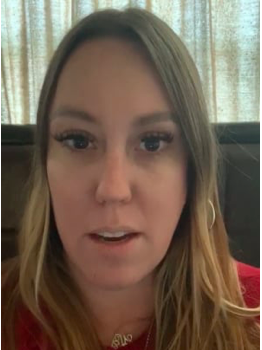FHFA Announces Official Review of FHLBank System
Written By: Joel Palmer, Op-Ed Writer
The Federal Housing Finance Agency (FHFA) announced last week that it will conduct a comprehensive review of the Federal Home Loan Bank (FHLBank) System this fall.
FHFA Director Sandra L. Thompson told members of Congress in July that the agency was planning this review. During her remarks, she said the review would include a 90-year lookback, forward-looking analysis, engagement of the system’s stakeholders and public listening sessions.
“We want this review to be an opportunity to examine everything from the FHLBanks’ membership base, operational efficiency, and effectiveness, to more foundational questions about mission, purpose, and organization,” Thompson said.
The Federal Home Loan Bank (FHLBank) System was founded in 1932 by the Federal Home Loan Bank Act as a government sponsored enterprise to support mortgage lending and related community investment. It is composed of 11 regional FHLBanks that loan money to other lending institutions, primarily to support real estate loans. Each FHLBank is a separate, government-chartered, member-owned corporation.
FHFA oversees the system and is responsible for ensuring that its banks operate in a financially safe and sound fashion, remain adequately capitalized and able to raise funds in the capital markets, and operate in a manner consistent with their housing finance mission. The system’s fiscal agent is the Office of Finance. All FHL banks are subject to annual on-site examinations of ongoing monitoring.
In its announcement, the FHFA said it is specifically interested in receiving feedback in six key areas:
The FHLBanks’ general mission and purpose in a changing marketplace.
FHLBank organization, operational efficiency, and effectiveness.
FHLBanks’ role in promoting affordable, sustainable, equitable, and resilient housing and community investment.
Addressing the unique needs of rural and financially vulnerable communities.
Member products, services, and collateral requirements.
Membership eligibility and requirements.
Based on Thompson’s comments in July and in last week’s announcements, it’s unlikely that this review will result in significant changes to the FHLBank System. Proponents of the system point out the system’s current role in providing liquidity, especially during times of market stress. The system has been credited with making homeownership possible for many who couldn’t otherwise buy a house. It also provides funding for rental properties, small businesses and other development initiatives.
“FHFA plays a vital role in supporting affordable, equitable, and sustainable access to mortgage credit,” said FHFA Director Sandra L. Thompson. “FHFA’s regulated entities function as a reliable source of liquidity and funding for housing finance and community investment.
System supporters also note that FHLBanks did not require government bailouts during the 2008 financial crisis, unlike Fannie Mae and Freddie Mac. In fact, the system increased its lending during this period as other funding sources dried up.
The system also has its critics. Some believe FHLBank funding encourages irresponsible lending and contributes to volatility in the real estate market. There are also concerns about the growth in Federal Home Loan Bank members and increased reliance on FHLB funding. Any distress among FHLBanks, the argument goes, could spread throughout capital markets and the overall economy.
Daniel K. Tarullo, a nonresident senior fellow of economic studies at The Hutchins Center on Fiscal and Monetary Policy, recently wrote a piece arguing that the system has strayed from its original mission.
“Most lending by FHLBs today is only very loosely connected to their mission of promoting housing finance,” he wrote. “But their current business model of borrowing extensively in short-term funding markets and providing longer-term funding to their depository institution and insurance company members carries risks for the financial system.”
He also contends that, “In the absence of a well-defined role from Congress, the FHLBs have used their public privileges to create profitable opportunities for themselves in financial markets.”
As the FHFA conducts its review, Tarullo laid out three areas of focus:
Enhanced transparency of both the FHFA and the FHLB system to match the requirements of federal banking agencies.
Revisiting its regulations and supervisory guidance.
Engaging in regular consultations with other federal financial regulators to minimize the adverse impact of FHLB activities on the statutory missions of those agencies.
If you have ideas for improving the FHLBank system, you have a few opportunities to share them.
FHFA will hold a kick-off event — FHLBank System at 100: Focusing on the Future — a listening session on Thursday, September 29, 2022. The session will be held in person at the Constitution Center in Washington, DC, with the option to participate virtually.
Those interested can register to attend or speak at the September 29 listening session. FHFA is also accepting written comments through October 21, 2022, via FHFA’s website or mailed to: Federal Housing Finance Agency, 400 7th Street, SW, Washington, DC 20024.
About the Author
As an NAMP® Opinion Editorial Contributor, Joel Palmer is a freelance writer who spent 10 years as a business and financial reporter and another 10 years in marketing for the insurance and financial services industries. He regularly writes about the mortgage industry, as well as residential and commercial real estate, investments, and retirement income planning. He has also ghostwritten books on starting a business, marketing, and retirement income planning.





















